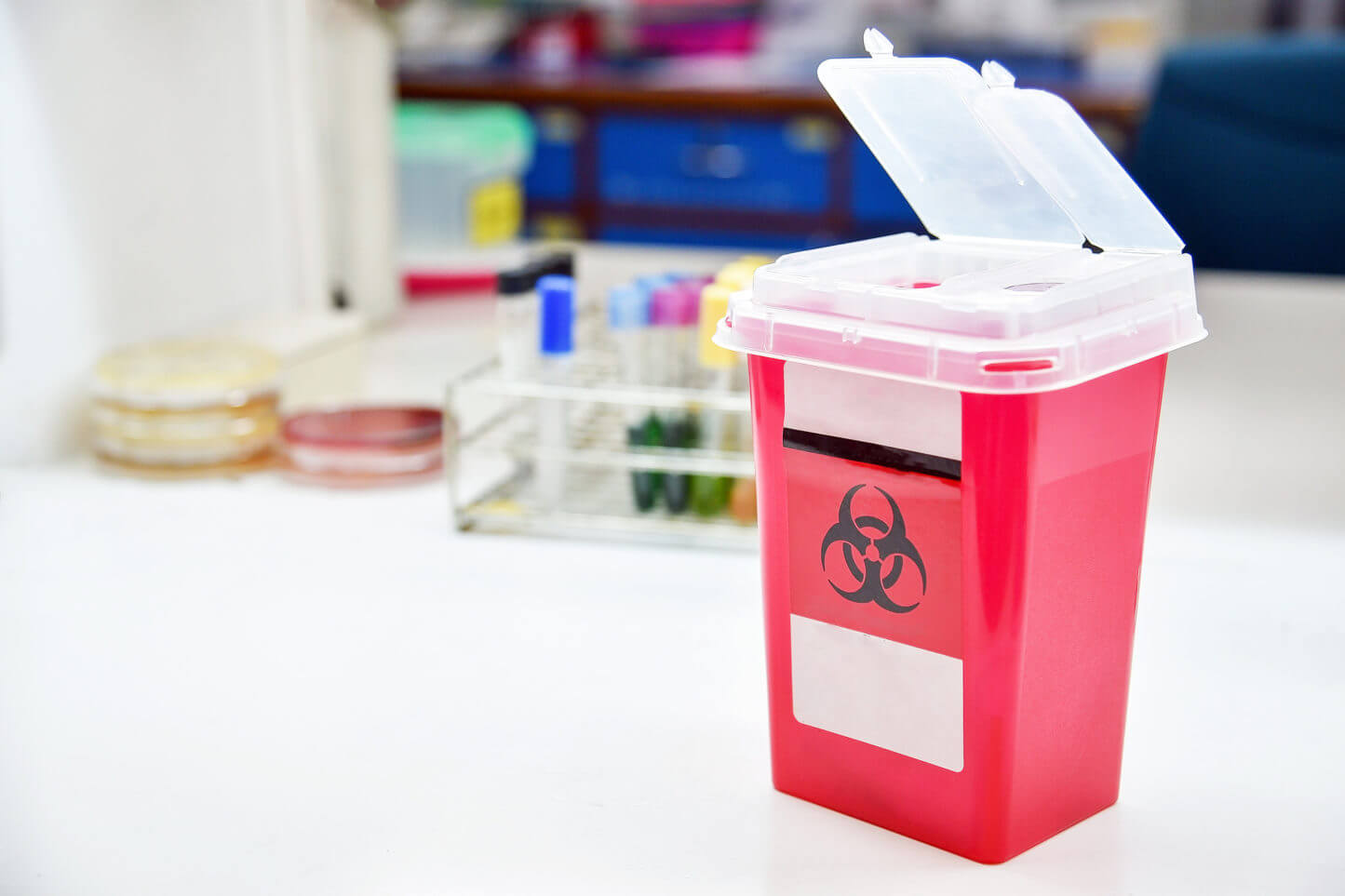The Overlooked Risk That Affects Everyone
From hospitals and health clinics to veterinary offices and public restrooms, sharps — needles, syringes, lancets, and more — are a daily tool for health and wellness. But when disposal goes wrong, the risks get sharp fast.
Improper disposal creates a ripple effect, putting not only healthcare workers at risk but also janitors, waste handlers, and unsuspecting members of the public. A needle in a trash bag isn’t just careless — it’s dangerous.
Why Sharps Disposal Is Everyone’s Business
At Applied Innovation, we believe protecting your people and community starts with practical, scalable habits. Safe sharps disposal isn’t just a healthcare protocol — it’s a business imperative and a community responsibility.
The Real Threat: Needlestick Injuries
Needlestick injuries are more than a minor poke. They can expose victims to serious bloodborne pathogens like HIV, Hepatitis B, and Hepatitis C. These injuries don’t just happen in clinical settings. They occur during everyday maintenance, sanitation, and waste handling — often to those without medical training.
If sharps are thrown in standard trash or recycling, everyone — from janitors to kids and pets — is at risk.
Sharps Risk by the Numbers: Healthcare Workers in Focus
Healthcare professionals are especially vulnerable. Nurses, in particular, may dispose of sharps ten or more times a day. The more they handle sharps, the higher the risk — especially if disposal systems are poorly managed or containers are overfilled.
Did you know? One-third of sharps injuries occur during or after disposal. That makes proper training and thoughtful container placement (at point-of-use and at the right height) essential — not optional.
It’s More Than Just Healthcare
Public spaces like schools, airports, and office restrooms aren’t immune. A stray needle in a trash bin or under a sink can become a hazard for anyone.
Even at home, sharps used for managing conditions like diabetes require the same care. A full container under the bathroom sink can be just as risky as one left in an ER.
How to Dispose of Sharps Safely
Here’s what effective, compliant sharps disposal looks like:
- Place all sharps in a clearly marked, FDA-cleared sharps container immediately after use.
- Use containers that are puncture-resistant, leak-proof, and have a secure lid.
- Never overfill — and always store containers out of reach from children and pets.
- Never dispose of sharps in the trash, recycling, or toilet.
- Follow your community’s drop-off, pick-up, or mail-back guidelines.
The Small Container That Makes a Big Difference
A reliable sharps container isn’t a luxury — it’s a necessity. The best containers are:
- One-handed accessible
- Clearly labeled and tamper-proof
- Made of puncture-resistant material
- Designed for convenient disposal at point-of-use
For facilities, especially those with lean environmental services teams, the right container can drastically cut down on injury risks and improve compliance.
Regulations Matter: Stay Compliant, Stay Safe
Sharps disposal isn’t just about safety — it’s also about compliance. OSHA and the FDA have strict guidelines in place. Ignoring them could mean hefty fines or worse, harm to your team.
Applied Innovation provides full-service medical waste solutions, helping you meet regulatory standards while protecting your staff and reputation.
Let’s Do This Right — Together
A safe, secure sharps disposal program is more than a policy — it’s a commitment to your people and your community. Whether you’re running a healthcare clinic, managing a school, or caring for someone at home, the right practices save lives.
Ready to implement smarter sharps solutions? Let’s talk.
